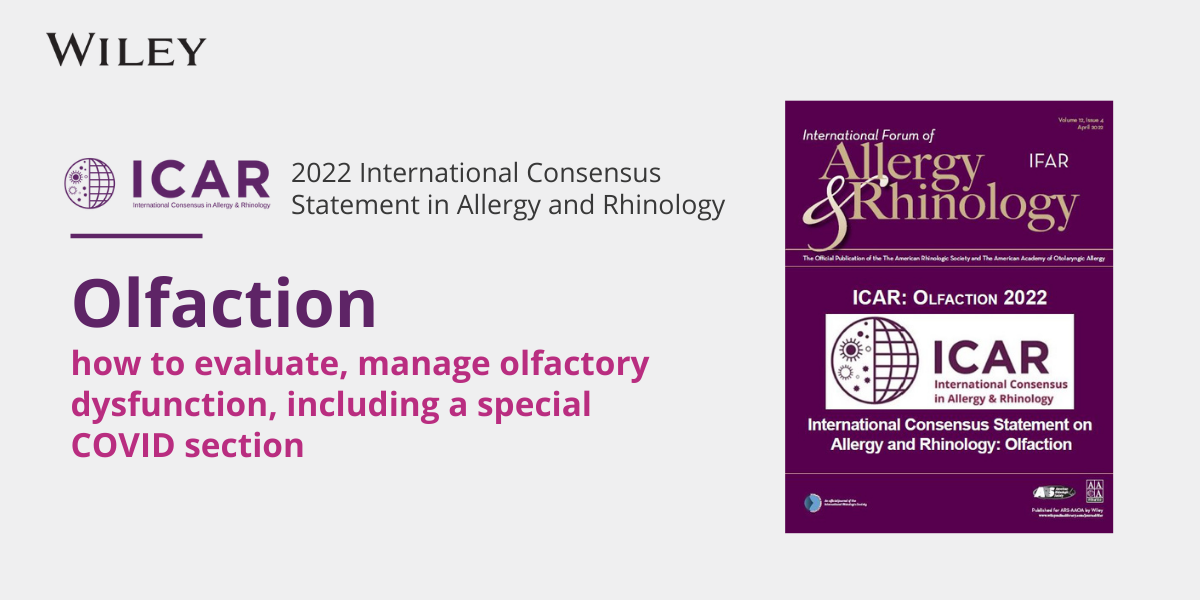
Managing Your Practice
Marketing Your Practice or Strategic Practice Management?
Excerpted from Keith Borglum
Many otolaryngologists and their practice administrators confuse marketing and advertising, thinking marketing is limited to advertising to attract new patients. Often stereotyped, marketing is more than newspaper and radio ads, billboards, and direct mail campaigns.
Marketing is any activity that moves your practice in a desired direction. Directions might include increasing income, deterring new competitors, retaining market share, shifting payer patterns, introducing new services, recruiting new providers, entering new marketplaces, or combating negative publicity.
There are many activities that might be considered “good practice” or “good management” that fit under the broad definition of marketing. These include strategic planning, patient relations, insurance plan contracting, recall systems, practice hours, practice acquisition, office location, and ancillary products and services.
Otolaryngology practices consider many of the above when defining the scope of their practice or the scope of each physician within the practice. Offering allergy diagnosis and management expands your practice opportunities and opens strategic areas to highlight.
Below is a cliff note summary of things to consider when strategically considering your practice goals, scope, and marketing tools to help you deliver on your practice vision.
Have a Written One-Year and Five-Year Strategic Plan
Practices with a plan typically out-perform practices without a plan. The first and most important part of a marketing plan is the goal, as it is a foundation for all the other decisions. First, develop your five-year goals, since your one-year goals should fit within the context of your five-year plan. Your five-year goal should be strategic and more broad in scope.
Each year, you should evaluate and amend next year’s goals based upon whether or not you achieved this year’s goals. Concentrate on developing strong, well-crafted (specific), measurable goals. If you do not define what success will look like, you will have a hard time navigating toward your desired end. Limit your goals to no more than five or you will set yourself up for failure or mediocrity.
Where you are in your practice will impact your marketing goals. Defining your 1- and 5-year strategy allows you to focus on where you are and where you want to be to help you build the right bridge. Say for example, you are just adding allergy to your scope of practice. Your goals may focus on developing your allergy practice — “achieve a consistent monthly allergy caseload targeting 10 new allergy patients a month to grow your allergy patient load to 100 patients actively on immunotherapy within a year.”
Based on this, you map your marketing plan to help reach this allergy patient load:
- Who is your potential patient base?
- What is your payer mix/coverage?
- Self-assessment availability, affability, ability, location, capacity — both staff and facility resources, experience, reputation, etc.
- Competition-assessment
- Market-assessment demand, payers, economy, demographics, geographic-shift, changes, etc.
- Budget — what are you willing to spend up front to launch the new service? (3 percent to 8 percent typical, 10 percent or more to enter a market or for elective services.) What direct costs in equipment and supplies do you need to invest?
- Decide strategies internal/external, conservative/assertive, hundreds of choices (Allergy testing: type? Immunotherapy options? Defined times for allergy shots, etc)
- Create an implementation calendar, include production lead-time, seasonality, pacing, etc.
- Engage support services, involve staff, implement the plan
- Review and adjustment track and review results monthly, adjust plan as needed, experiment
Tune-Up Your Recall System
Do you know how many AR diagnoses undergo allergy testing? What is your conversion rate to immunotherapy? Immunotherapy fall off rate? Building in a system to better understand these items will help you build better patient compliance. Maybe patients are falling through the cracks with scheduling problems between work up and allergy testing. Maybe your hours of availability for shots is too restrictive for your immunotherapy patients. Developing a chart review system to audit 100 charts over 5 days to discern any patterns or opportunities to improve service delivery and improve patient compliance. Follow up on any non-compliant patients in the mix. Talking to the patient who has dropped off the immunotherapy schedule may give you insights.
Demonstrate Availability, Affability and Ability
Everyone is too busy today. How can you add a level of convenience to your patients?
- See new patients and referrals as soon as possible, preferably within the same week of the call.
- See patients on time (putting them in the exam room on time only to let them wait is not on time).
- Address the patient by name.
- Make an effort to engage the patient in light conversation.
- Ask patients about their kids, work/school or the weather.
Don’t overlook the value of your front office and scheduling staff. These folks are your patient interface, Their attitude sets the stage for how the patient or referring physician perceives the office and your practice. We all prefer to interact with people we like so make sure everyone who interacts with your patients is friendly and pleasant.
Patients often perceive higher ability in physicians who have affiliations with academic centers or who publish articles in peer-reviewed journals. Post this information to your practice website, practice brochure, and in patient communication materials.
Get Out and Network Again
Just because you have been in practice in town for years, does not mean everyone knows you. Network with others. Meet the new PCPs and FPs in town. Reach out to your local NP or PA community. Change your mindset from meeting strangers to building and cultivating your referral network. So much of ENT is seen acutely by your primary care colleagues. Use practice trends and new guidelines or therapeutic interventions as a way to keep in touch with these colleagues. Also, don’t overlook the referral follow up thank you. Remember, your patient already has a relationship with their primary care doctor. Keep them in the loop on your diagnosis and management and thank them for the referral.
Keep Your Name in Front of Patients and Referrals
It is estimated that it takes five or more encounters with your practice’s name for it to be recognized. Your name should appear anywhere potential patients would look. Your practice’s name, address, phone number, and website address should appear on every single piece of paper that leaves your office. This includes all those patient-education pamphlets, invoices, receipts, care and guidance instructions, pre- and post-surgery instructions. Anything they will carry out of the office. Remember, patients like to carry out information to read up on the diagnosis and recommended treatment after they get home. Information from you is better than what they will yield from a google search alone. But keep in mind, they will google it.
Review all your payor provider lists to help assure your information is accurate. Consider scheduling options like ZocDoc to have a broader outreach. Review your healthgrades and related doctor review sites to consider the comments posted.
Have a Web Page
Here again is a marketing strategy that depends on your goals and plan. Today’s patients generally do not search the internet for physicians (symptoms yes). They start with their insurance provider directory.
Build a website that reflects your scope of practice and serves as a complete resource for the patient. Can they book an appointment online? Complete and submit all your patient intake forms? Handle pre-authorization, if needed? Can patients communicate with your office via a secure HIPPA compliant messaging service?
Your office brochure and patient-education materials should complement the information on your website. Make sure any potential patients find your Web address on all your print and media materials.
In addition to patients, consider your website as a tool for referring physicians, especially if you serve a large region or want to highlight subspecialty interests, like allergy, in ENT.
Your website does not need to be fancy, state of the art, but it does need to be reliably functional, user-friendly, with useful content and patient education tools and resources.
Maintain a Commitment to Quality
Focus on providing extraordinary service to patients to increase patient retention and patient referrals. While Yelp has shown that people love to complain anonymously, people still like to tell friends and family about good experiences. And the patient experience is not just the medical care, but the whole process from making the appointment to paying the bill with the care sandwiched in the whole mix.
Think about examples of extraordinary service you have experienced. Anything you could adopt? Pay attention to how problems and disputes were resolved. How can you implement similar practices? Regardless of your commitment to patient care, you will need to find ways to manage billing disputes, missed appointments or tardiness, and related challenges that are just part of the game. Modeling experiences that left you satisfied is a good starting point. Consistency in implementing your defined approach on these types of challenges among your staff is key as well. No one likes being the victim of upward delegation, nor does anyone like the folks above them caving when they took the brunt from a disgruntled patient trying to implement your defined protocol.
Drop Your Worst Insurance Plans
Review your scheduling patterns and payor patterns. If you are booked more than two weeks in advance more than 75 percent of the time are you really looking to expand? If one or a handful of your payors dominate your patient mix is it the right mix. You need to know where your payors fall in terms of reimbursement. Within your scope of practice, some of you payors may be better than others or better for certain procedures. Consider shrinking your patient panel by dropping poor-paying insurance reimbursement contracts. By limiting your practice to better-paying contracts, you can change your patient volume/income ratio. If you don’t need to see as many patients for the same income, you can spend more time per patient and reduce wait times. Drop one plan at a time until a desirable balance of patient-load, wait-time and income is achieved.
* * *
Excerpted from….
About the author:
Keith Borglum is a medical practice-marketing consultant with Professional Management and Marketing in Santa Rosa, Calif. He is a member of the AAOE Consultant Directory, the AMA ConsultantLink, director of the National Association of Health Care Consultants and an editor of Healthcare Marketing for the Open Directory Project providing content-selection for Google, AOL-Search and Yahoo-Search. He consults nationally to physicians on practice management, marketing, practice valuation and sales and group formation issues.
Spotlight/News





